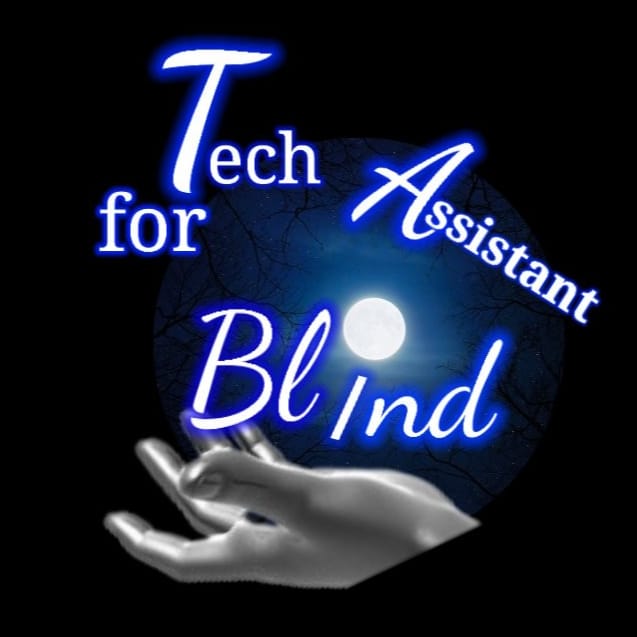Published on
April 4, 2023
Written by
Tech Assistant for blind Team
Assistive technology (AT) is an essential tool for individuals with disabilities, enabling them to participate fully in various aspects of life, including education. With AT, students with disabilities can access information, communicate their ideas, and perform classroom activities that would otherwise be challenging or impossible. In this blog post, we will explore the different types of assistive technology available for education, their benefits, and how they can positively impact the learning experience of students with disabilities.
Types of Assistive Technology for Education
Assistive technology comes in many different forms, ranging from low-tech to high-tech devices. Here are some of the most common types of AT used in education:
1. Text-to-Speech Software: This software reads text aloud, allowing students to hear the information rather than read it. It is helpful for students with reading disabilities, visual impairments, or difficulty focusing. Text-to-speech software can also be useful for students who prefer auditory learning.
2. Speech-to-Text Software: This software enables students to dictate their ideas and have them transcribed into text format. Students who have difficulty with writing, such as those with dysgraphia or physical impairments, can benefit from this type of software.
3. Screen Readers: These programs can read digital content aloud and can be helpful for students who have visual impairments. They can also be useful for students who have learning disabilities that make reading difficult.
4. Captioning: This technology adds captions to audio or video content, making it accessible for students with hearing impairments.
5. Braille Displays: These devices convert digital text into Braille, which can be helpful for students who are blind.
6. Alternative Input Devices: These devices, such as joysticks or touchpads, can be used instead of a traditional keyboard and mouse. They can be helpful for students with physical disabilities that make it challenging to use traditional computer input devices.
7. Augmentative and Alternative Communication (AAC) Devices: These devices can help individuals with communication impairments communicate with others. They can include text-to-speech software, picture communication systems, and speech-generating devices.
8. Word Prediction Software: Word prediction software predicts words as the user types, reducing the number of keystrokes needed. This tool is especially helpful for students with motor or learning disabilities that make typing difficult.
9. Electronic Math Worksheets: These worksheets are designed to provide students with a more interactive and accessible approach to learning math. Electronic math worksheets can read problems aloud, offer visual aids, and provide feedback on solutions.
10. Mobile Apps: There are many apps available that can assist with various aspects of learning, including organization, note-taking, and time management. Many of these apps can be customized for individual learning needs.
Benefits of Assistive Technology for Education
Assistive technology has numerous benefits for students with disabilities, including:
1. Increased Participation: With the help of AT, students with disabilities can more easily participate in classroom activities and discussions, engage with peers, and complete assignments.
2. Improved Access to Information: AT tools can provide students with various ways of accessing information, such as through audio or visual aids, making learning more accessible and engaging.
3. Enhanced Independence: Assistive technology enables students to perform tasks independently that they may have needed help with in the past. This increased independence can boost their confidence and self-esteem.
4. Customized Learning: With the ability to customize technology tools to individual learning needs, students can receive a personalized learning experience tailored to their strengths and weaknesses.
5. Improved Communication: AAC devices can help students with communication difficulties express their ideas more effectively, leading to increased social interaction and positive relationships with peers and teachers.
Challenges and Considerations
While assistive technology can be a game-changer for students with disabilities, there are some challenges and considerations to keep in mind. Here are a few examples:
1. Access: Schools must ensure that all students who require assistive technology have access to it, whether through school-provided devices or personal devices brought from home.
2. Cost: Assistive technology can be expensive, and not all school districts or families can afford to purchase it. This can lead to a lack of access to essential tools for some students.
3. Training: It is crucial that teachers and students receive adequate training on the use of assistive technology to maximize its benefits fully.
4. Stigma: Students may feel stigmatized or embarrassed by the use of assistive technology, leading to a reluctance to use it.
at the end:
Assistive technology has the potential to transform the way students with disabilities access education. It can provide students with the necessary tools and resources to become more independent learners, access digital content, and communicate effectively. By providing equal opportunities for students with disabilities, we can help create a more inclusive and equitable education system. As technology continues to evolve, it’s essential to stay up-to-date on the latest developments in assistive technology and how they can be used to support students with disabilities in their educational journey.

